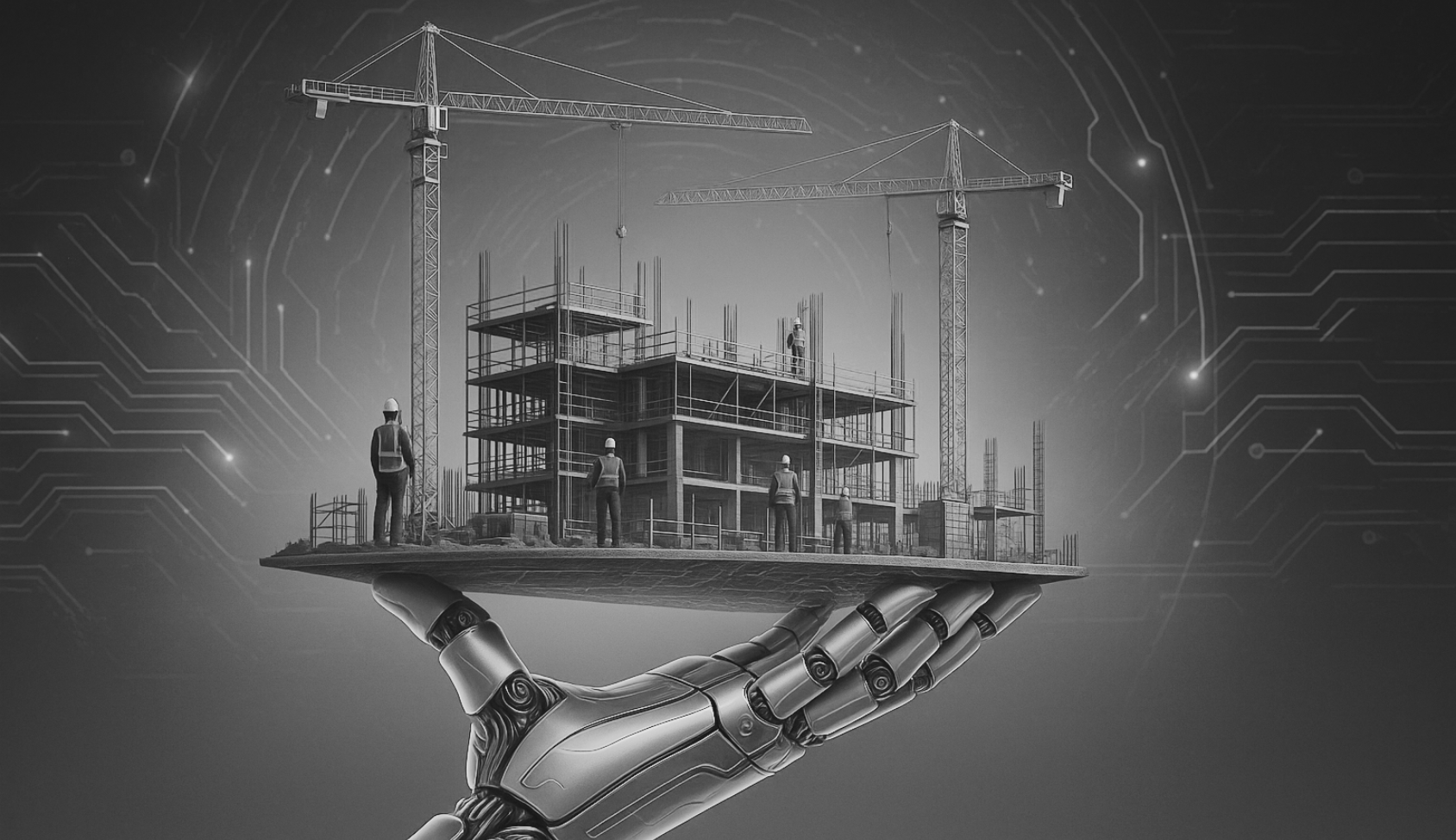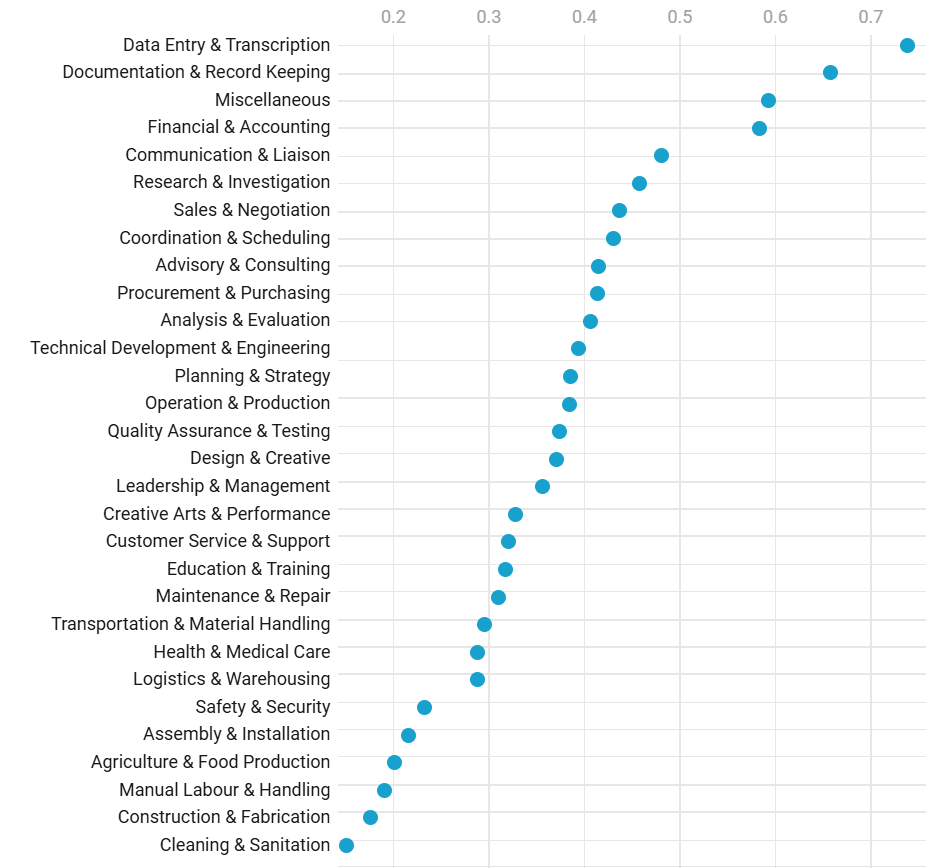blog

opportunity for australia's infrastructure employers

Chart: ABC News Source: Job and Skills Australia
Will We See More People Choosing the Trades?
It’s a fair question: if AI is expected to disrupt many white-collar jobs, will more people start considering a career in the trades? The signs suggest we could.
As automation and AI put pressure on roles in administration, finance, and accounting, young people and jobseekers alike are looking for more secure pathways. Trade and site-based roles, from carpenters and electricians through to plant operators and welders, remain relatively resilient because they require hands-on problem solving in unpredictable environments. These are skills that AI cannot easily replicate.
At the same time, the industry’s image is shifting. Construction sites are no longer just about hard hats and heavy lifting; they now involve digital models, drones, AI-assisted machinery, and predictive safety tools. That blend of physical skill and new technology is making trades more attractive to a generation of workers who want both job security and exposure to innovation.
For employers, this presents an opportunity. If you can position trade careers as modern, stable, and tech-enabled, you’re more likely to attract candidates who might otherwise have pursued office-based roles. Investing in strong apprenticeship pathways and clear progression into supervisory or technical leadership roles will be key to turning this interest into long-term careers.
And it’s not just the trades...engineering and civil construction roles are also set to benefit, because while AI can handle data and patterns, it can’t replicate the judgment, leadership, and real-world decision-making these roles require.
Why Construction and Engineering Jobs Will Keep Growing in the AI Era
A recent Jobs and Skills Australia (JSA) study confirms that construction roles are among the least exposed to automation. Instead of replacement, AI is far more likely to act as an assistant: helping project managers generate baseline schedules, supporting heavy equipment operators with guidance systems, or flagging potential defects for inspectors.
Meanwhile, a McKinsey study predicts a 12% increase in demand for construction workers by 2030, and a 23% increase in STEM jobs globally over the same period. This suggests that, far from shrinking, opportunities in construction and engineering will grow, precisely because these are jobs that cannot easily be coded away.
In other words, while many white-collar roles face disruption, site-based, technical and engineering careers are emerging as more resilient and even more attractive pathways. For employers, this is both a challenge and a chance: the demand is there, but competition for skilled workers will intensify.
What Employers Can Do to Make the Most of the Opportunity
AI isn’t going to take away the need for skilled workers in construction and infrastructure, but it is going to change what skills matter most, and how employers compete for talent.
1. Position Construction and Engineering Jobs as Smart Career Choices
Young jobseekers are already questioning the security of admin or finance careers. By contrast, construction and engineering roles are growing and harder to replace with tech.
Practical step: When hiring, emphasise the why: the industry’s stability, clear career pathways, and the fact that workers are using cutting-edge tools like drones, BIM, and AI-enabled machinery. It helps candidates see these as future-proof careers, not just jobs.
2. Modernise Apprenticeships
Apprenticeships remain the backbone for trades, but they need to evolve. A first-year apprentice today is more tech-savvy than ever, and they want to see how that fits into their training.
Practical step: Partner with TAFEs or training providers to include modules on digital site tools, machine guidance, or drone surveying. This modernises traditional trade training and attracts a new generation who see the value of combining hands-on skills with tech.
3. Keep Experienced Workers Learning
The best workers don’t stop learning once they’re qualified, and that goes for both tradespeople and engineering professionals. AI tools are already reshaping how estimators, civil designers, and project managers do their jobs.
Practical step: For engineers, offer professional development in areas like digital twin technology, AI-assisted scheduling, or advanced project analytics. For tradespeople, provide short, job-friendly courses on predictive maintenance, digital safety reporting, or using AI-enabled equipment. This shows you’re investing across your whole workforce.
4. Keep Humans in Charge
AI can draft a program or spot a defect, but at the end of the day, someone with a license has to sign it off. That’s not changing anytime soon.
Practical step:
Make it clear to your teams and your clients: AI is there to support, not to replace. Having a “human-in-the-loop” approach reassures workers, and it builds trust with regulators and stakeholders.
5. Bringing Talent to Where It’s Needed Most
A lot of pipeline growth is up north in Queensland, the NT, and in renewables. The challenge isn’t just finding the workers; it’s convincing them to move.
Practical step: Roles like project engineers, project managers, and estimators are in especially high demand in these regions, alongside tradespeople such as carpenters and electricians. Offer relocation support, flexible rosters, or housing assistance to make the move worthwhile. Employers who think about mobility now will have an edge as projects heat up.
6. Use Data to Stay Ahead of Infrastructure Workforce Needs
Labour shortages aren’t a surprise anymore and the data is there if you’re looking. Infrastructure Australia and JSA already publish where the gaps are emerging.
Practical step: Treat workforce planning like project planning. Forecast demand for engineers, project managers, and trades two to three years out. Building pipelines early keeps you ahead of the curve.
The Bottom Line
AI is going to change how work gets done, but in construction, engineering, and trades, it won’t replace the need for people. Whether it’s tradespeople on the tools or engineers and project managers overseeing complex builds, people will remain at the heart of Australia’s infrastructure future. The difference is they’ll be working with new tools, not competing against them.
For employers, the message is clear: don’t wait for disruption to happen. Use this moment to modernise your apprenticeships, upskill your engineers, and make your business a place where workers can build a long-term future.
Australia’s infrastructure pipeline is strong, demand for skilled people isn’t slowing down, and AI (used well) is a chance to get more done with the teams you already have. The future of this industry will still be built by people. AI will just help them build it better.
I hope you have found this blog insightful. For a closer look at what this means for individuals, you might also like our blog Will AI Take My Job? where we explore skills that AI cannot replace in engineering.
As a specialist recruitment agency in the civil construction and enginering sectors, Constructive represents a strong network of talented candidates across Australia.
If you are currently looking to hire talent, please contact us at info@constructive.au





